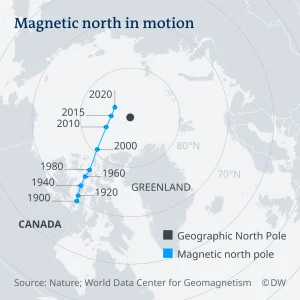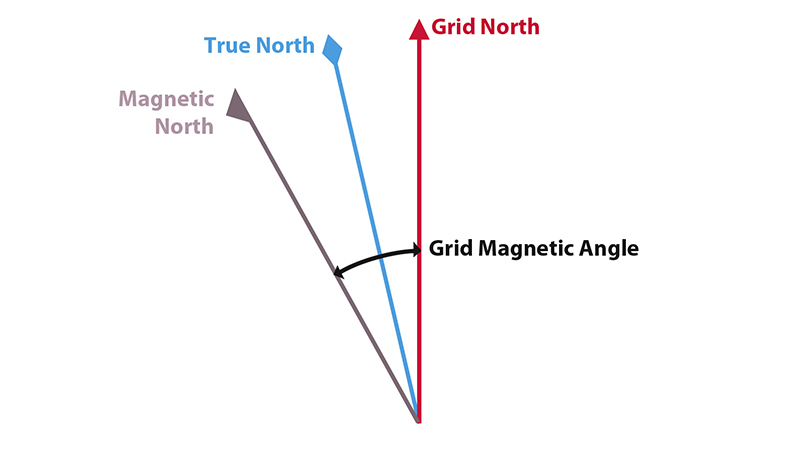Which North is North?
"Never eat shredded wheat", "naughty elephants squirt water", "never, ever, support Watford".
I've not gone mad; you may perhaps recognise these mnemonics from childhood as a way to remember the cardinal points: North, East, South, West. In a navigation context, however, it's a little more complex than that because we in fact need to consider three types of North.
The Three Norths
The three types of North we need to consider are:
- True North, or geographic north, most precisely is the geographic point where the earth's rotational axis meets the surface. It can more easily be described as what you might think of as "the north pole".
- Magnetic North is strictly the geographic point at which the earth's magnetic field points vertically down, but for our purpose is better described as the axis that a compass needle will align itself with (or point to).
- Grid North is a kind of imaginary point that is the result of representing part of a 3D spherical earth on a 2D flat map. It represents the theoretical point at which the longitudinal (vertical) lines meet.
For navigation purposes in the UK, we are only really concerned with magnetic north and grid north - this is because our maps use a grid system; for maps that use true north, grid north can be ignored.

[Source]
Magnetic north is currently located off the northern coast of Siberia having travelled from Arctic Canada, making it's closest pass to true north in 2017.
But, why does this all matter?
Magnetic Variation

As we just learned, the top of a UK map points to grid north, and a compass needle will point to magnetic north. The difference in the angle between these two is called magnetic variation, or grid magnetic angle and it's value will differ not only based on location, but also time.
On OS maps and Harvey maps, the magnetic variation for the specific area will be printed for a specific date, as well as a rate of change. For example my Ordnance Survey OL 24 - The Peak District map from 2015 says the following:
At the centre of the E and W sheets true north is 0°18' and 0°03' west of grid north respectively.
Magnetic north is estimated at 2°26' and 2°18' west of grid north respectively for July 2012. Annual change is approximately 11' east.
Magnetic data supplied by the British Geological Survey.
To calculate the correct values for today, we simply need to calculate the change and add it to the printed value. Given we're approximately 11.5 years since July 2012, that means a change of 11' times 11.5; which equals 126.5 minutes, or approximately 2°6' (there are 60 minutes in a degree). Therefore the grid magnetic angles for that each side of that map of the peak district today would be approximately 20 minutes west (-0°20'), and 12 minutes west (-0°12') - too small to account for on most handheld compasses!
For the next few years, in Great Britain, the value is so small that it can generally be ignored over all but very large distances, but in other parts of the world, and in the future it is a necessity. Not accounting for a 5° variation, over 5km, would result in being over 400m away from your expected destination!
At the time of publishing, from my location in Milton Keynes, UK, coincidentally this value is effectively 0 as the three north's align over Great Britain for the first time in 350 years!
We'll cover how to account for this variation in a future post on bearings.
#GoForIt
I hope this post has helped you understand the concept of the three norths and their relevance in proper navigation. Knowing how to account for magnetic variation is an essential skill for any outdoor adventurer, especially in areas where the difference is significant. Watch out for upcoming posts on bearings and how to properly account for the magnetic variation we've covered here. In the meantime, grab your map and compass and head out to explore the great outdoors! Remember, the best way to improve your navigation skills is to practice them regularly. So, what are you waiting for? #GoForIt!